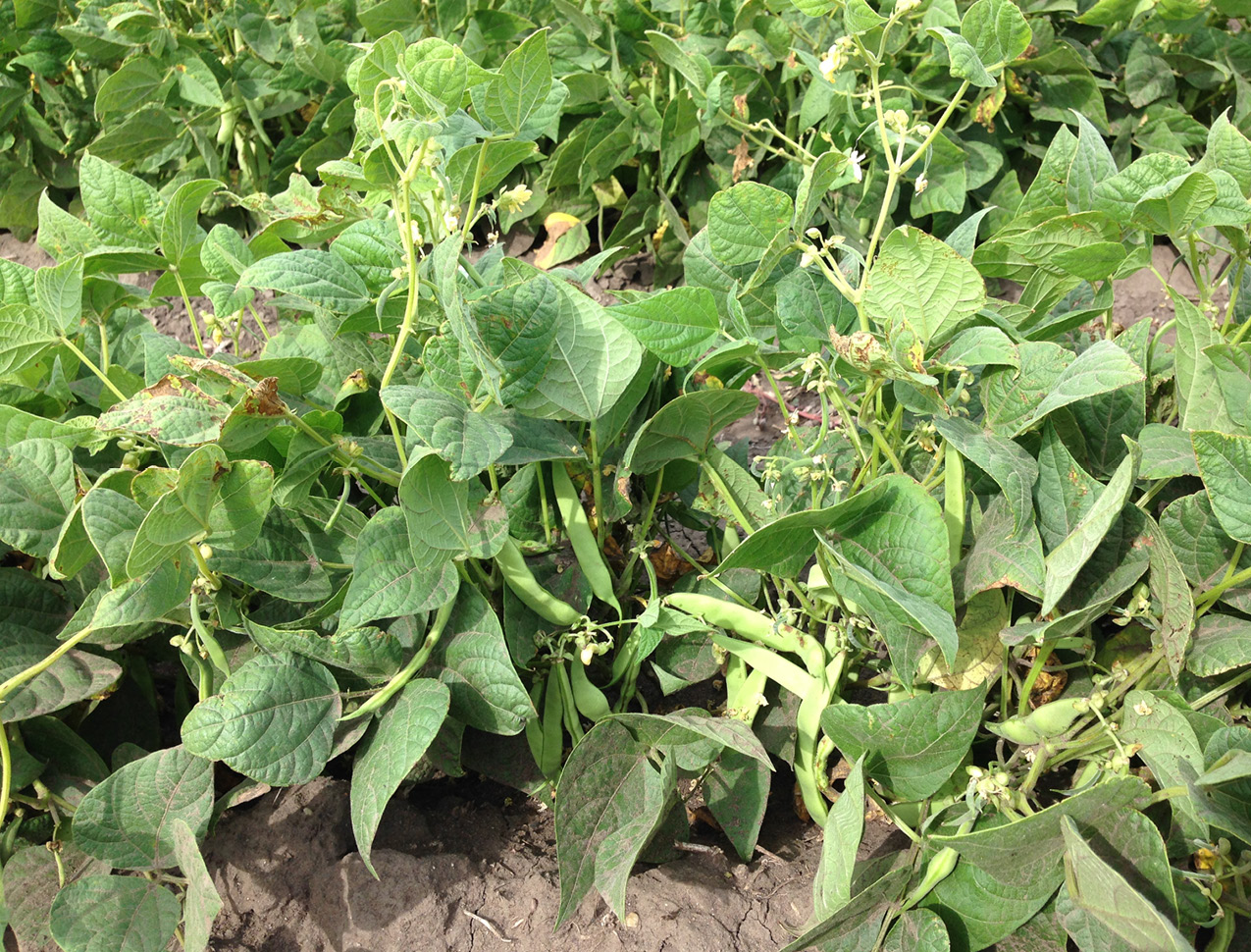Among years, yield with early planting tended to be greater than with normal planting dates in five of six trials (Table 1). However, yield generally was statistically similar with early and normal planting dates.
Yield with the early planting date was reduced in 2015 due to low plant density (44,160 plants per acre average across market types), compared with plant density (62,970 to 72,930 plants per acre) with later planting. The reduced plant stand resulted from cold and wet soil conditions (including snow) following planting, plus soil crusting that increased stress during seed germination and seedling emergence.
Averaged across the six trials, yield was statistically similar among planting periods but tended to be highest with early planting. Averaged across trials for each market type, yield was statistically similar for each market type with early, normal and late planting (Table 2). When averaged among trials and market types, yield also was similar among planting periods.
Table 2. Dry bean market type yield response to planting periods, Carrington and Prosper, 2012-15
| Market Type (variety) |
Trial Number1 |
Seed Yield (cwt/acre)
Planting Period2
EARLY |
Seed Yield (cwt/acre)
Planting Period2
NORMAL
|
Seed Yield (cwt/acre)
Period2
LATE
|
LSD (0.05) |
| Pinto (Lariat) |
6 |
19.6 |
19.5 |
20.5 |
NS |
| Black (Eclipse) |
3 |
19.8 |
20.3 |
18.2 |
NS |
| Navy (Avalanche) |
2 |
16.1 |
16.5 |
17.4 |
NS |
| Average |
|
19.0 |
19.1 |
19.3 |
NS |
1Pinto: Carrington=2012 (2 trials), 2013-2012; Prosper =2012. Black: Carrington=2012,2014-15;Navy: Carrington=2014-2015.
2Early: May 11-24; Normal: May 22-June 5; Late: June 5-18.
Table 3. Dry bean market type yield response to planting dates during early crop seasons, Carrington and Prosper, 2012 and 2015.
| Market Type (variety) |
Trial Number1 |
Seed Yield (cwt/acre)
Planting Period2
EARLY |
Seed Yield (cwt/acre)
Planting Period2
NORMAL
|
Seed Yield (cwt/acre)
Period2
LATE
|
LSD (0.05) |
| Pinto (Lariat) |
4 |
20.1 |
20.4 |
21.3 |
NS |
| Black (Eclipse) |
2 |
21.9 |
21.14 |
18.7 |
NS |
| Navy (Avalanche) |
1 |
12.2 |
16.1 |
15.5 |
NS |
| Average |
|
19.5 |
20.1 |
19.7 |
NS |
1Pinto: Carrington=2012 (2 trials) and 2015, and Prosper =2012. Black: Carrington=2012 and 2015; Navy: Carrington=2015.
2Early: May 11-17; Normal: May 22-30; Late: June 5-13.
The crop seasons of 2012 and 2015 were “early” (cool-season crop planting generally beginning in April) while 2013 and 2014 seasons were “late” (crop planting beginning in May). Table 3 summarizes dry bean seed yield during the early growing seasons.
Averaged across trials, yield was statistically similar for each market type with early, normal and late planting. When averaged among trials and market types, yield was statistically similar but tended to be highest with the normal planting period.
Table 4. Dry bean response to planting dates across market types, Carrington 2012a and 2014-15
| Planting Period |
Plant density (plants/acre) |
Planting to emergence (days) |
Emergence to physiological maturity (days) |
Seed Yield (cwt/acre) |
| May 13 to 23 |
70,670 |
20.1 |
20.4 |
18.9 |
| May 27 to June 5 |
79,350 |
21.9 |
21.4 |
19.7 |
| June 12 to 18 |
73,190 |
12.2 |
16.1 |
20.0 |
| LSD (0.05) Average |
|
19.5 |
20.1 |
NS |
1Carrington: 2012a= pinto and black; 2-14-15= pinto, black and navy.
Table 4 displays plant density and development, and yield by planting periods averaged across market types for three Carrington trials. Plant density tended to be greater with normal planting, compared with other planting periods.
Days from planting to plant emergence were delayed with early planting, generally due to cooler soil temperatures, compared with normal and late planting periods. Days from plant emergence to maturity averaged three days less with the normal planting period, compared with early or late planting. In 2014, plant lodging was slightly less with the normal planting period, compared with early or late planting (data not shown). Yield tended to increase with later planting.
Seed quality data with planting dates averaged across market types are displayed from trials conducted at Carrington in 2014 and 2015 (Table 5). Test weight increased with normal and late planting dates in 2014 and tended to increase in 2015, compared with the early planting dates. Seed size was largest with early planting in the 2015 trial. Seed quality based on visual evaluation was variable among plant dates.
Table 5. Dry bean seed quality with planting dates across market types, Carrington, 2014-15.
| 2014 Planting date |
2014 Test weight (lb/bu) |
2014 seed count (no.lb) |
2014 Seed quality2 26-Nov |
2014 Seed quality2 10-Dec |
2015 Planting date |
2015 Test weight (lb/bu)
|
2014 seed count (no.lb) |
2015 Seed quality3
0-5
|
| 23-May |
61.5 |
2,140 |
3.5 |
3 |
13-May |
60.8 |
1,970 |
2 |
| 5-Jun |
62.6 |
1,970 |
3.0 |
4 |
27-May |
61.2 |
2,090 |
3 |
| 18-Jun |
62.6 |
2,370 |
4.5 |
3 |
12-Jun |
61.2 |
2,250 |
3 |
| LSD (0.05) |
0.4 |
NS |
0.5 |
1 |
|
NS |
80 |
1 |
| |
|
|
|
|
|
|
|
|
1Market types= pinto, black and navy.
2Brightness visually evaluated on Nov. 26 and Dec. 10 using a sale of 0= dark and 5=light for pinto and navy and 0= dull and 5= bright for color of black bean. Ratings also included general seed quality.
3Visually evaluated on Nov. 24. Pinto: 0=light and 5= dark seed coat color; Navy: 0= no wrinkled seed coats and 5 = all seed coats wrinkled; no evaluation of black bean.

